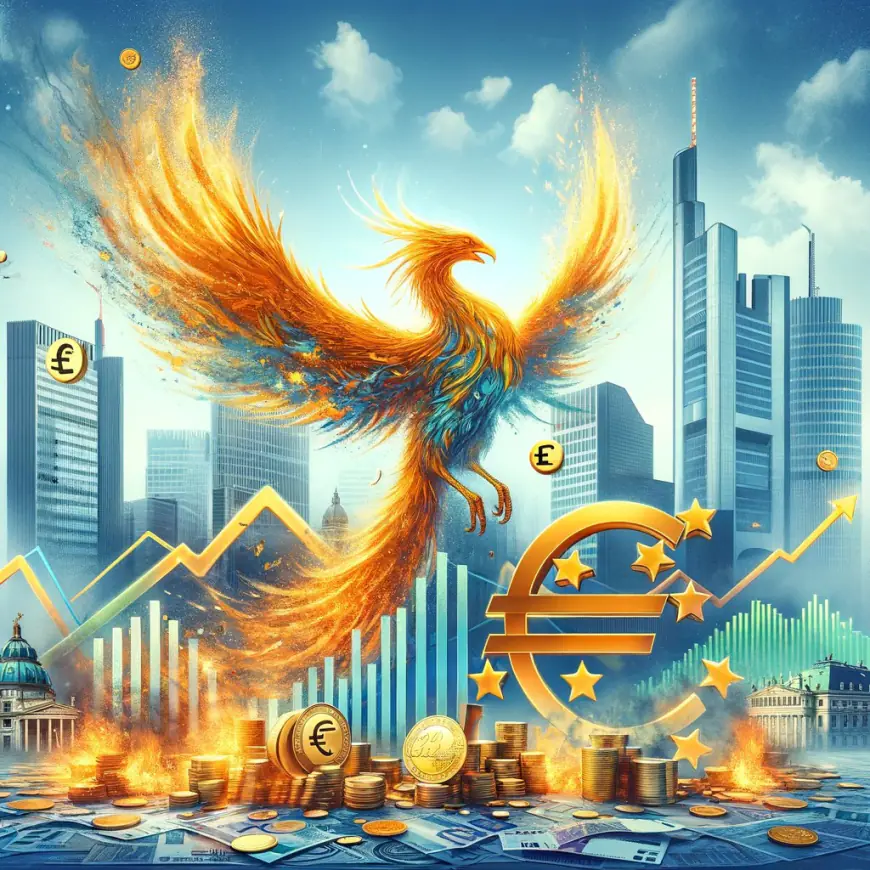Is Europe’s banking sector ready for a comeback?
The European banking sector, often overshadowed by its flashy American counterpart, stands at a crossroads. As we delve into the prospects of a European banking comeback, it’s clear that this isn’t just a financial story – it’s a tale of resilience, strategy, and perhaps a bit of good old-fashioned hope. The bigwigs like UBS, Deutsche […]

The European banking sector, often overshadowed by its flashy American counterpart, stands at a crossroads. As we delve into the prospects of a European banking comeback, it’s clear that this isn’t just a financial story – it’s a tale of resilience, strategy, and perhaps a bit of good old-fashioned hope. The bigwigs like UBS, Deutsche Bank, and Barclays, once seen as the underdogs in the global banking playground, might just be gearing up to prove naysayers wrong.
Morgan Stanley’s former chief, James Gorman, in an unexpected twist of festive spirit, hinted at a brighter future for these European entities. The question now is: Are we about to witness a European banking renaissance, or is this optimism just a shot in the dark?
The Ground Reality: Challenging Economic Landscape for Europe
Despite Gorman’s encouraging words, the European banking sector faces a complex economic terrain. The European economy is currently not the most vibrant, with net interest margins having reached their peak. The European Central Bank and the Bank of England are expected to slash interest rates sometime in 2024. Furthermore, the specter of rising bad debts looms large, threatening to destabilize the financial health of both corporate and individual borrowers.
However, there’s a silver lining in the form of potentially higher bank valuations in Europe, thanks to a technical trigger – a new wave of capital returns to shareholders. After a decade of American banks outperforming their European counterparts in payout ratios, Europe is finally catching up. Since 2021, European banks have started distributing dividends and buybacks at an impressive rate, potentially settling at around 80 percent, surpassing the historical norm of about 40 percent.
Stronger earnings and regulatory green lights have propelled dividends and buybacks in European banks to new heights, soaring to €121 billion in 2023 from €90 billion in 2021. This shift is significant, considering the traditional European preference for dividends over buybacks. But times are changing, and European regulators are now more open to easing equity demands, especially after witnessing the resilience of Eurozone and UK banks in early 2023.
The Potential Comeback: A Ray of Hope
Amid this cautious optimism, certain European banks are poised to make waves. UBS, for instance, is expected to see a spike in payouts following its acquisition of Credit Suisse. Similarly, UniCredit, after an impressive performance in share price recovery last year, is set to continue its efficiency drive. Other banks like ING, HSBC, Lloyds, and major Irish banks could follow suit with substantial payouts.
But for this momentum to build, the European banking sector needs more than just a few quirky investments. It requires the confidence of mainstream U.S. asset managers, who have been wary due to years of underperformance and policy surprises in Europe. As 2024 unfolds, these European banks, already outperforming Morgan Stanley since the year’s start, have a chance to sustain this trend and deliver on analysts’ expectations.
Meanwhile, European Central Bank President Christine Lagarde paints a somewhat murky picture for 2024, not foreseeing a return to economic “normality”. In a panel at the World Economic Forum in Davos, she highlighted the challenges and gradual normalization in consumption, trade, and inflation post-pandemic. Yet, she alluded to an uncertain future, different from the normality we know.
The World Trade Organization (WTO) forecasts a 3.3% increase in trade for 2024, offering a glimmer of hope. But uncertainties, from geopolitical conflicts to disruptions in global trade routes, make the path ahead unpredictable.
Germany’s Finance Minister Christian Lindner speaks of a ‘new normal’, reflecting on the structural changes and challenges facing Europe’s largest economy. With Germany narrowly avoiding a technical recession in 2023, the road to recovery is fraught with hurdles.
Europe’s banking sector, while facing a challenging economic landscape, shows signs of a potential comeback. With improved capital returns, regulatory shifts, and resilient performances, these banks might just fulfill Gorman’s prophecy. However, they will need more than mere optimism to navigate the uncertainties and forge a path to renewed prominence in the global financial arena. As we watch this story unfold, one thing is clear: the European banking sector is not down for the count just yet.
What's Your Reaction?









































































































